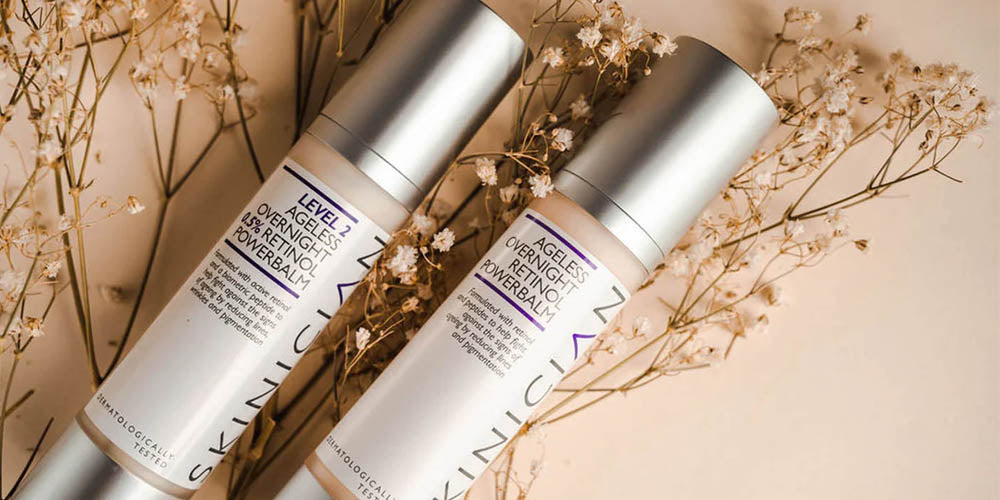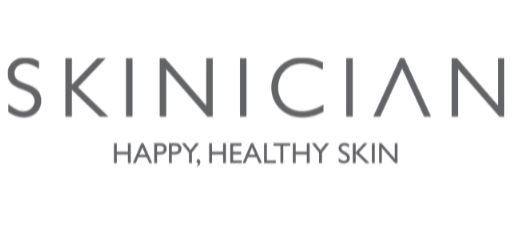
What is Retinol and When to Use Retinol in Skincare Routine
Share
Retinol helps to brighten dull skin, reduce breakouts by regulating oil production, and diminish the appearance of hyperpigmentation, fine lines and wrinkles. Prolonged use of retinol can make skin healthier and more youthful-looking.
If you’re thinking about introducing retinol into your skincare routine, read this guide and find everything you need to know about retinol.
In this Article:
- What is Retinol?
- What are the Skincare Benefits of Using Retinol?
- Retinol Before and After
- How To Introduce Retinol Into Your Skincare Routine
- Retinol Side effects
- Facts About Retinol
- Retinol FAQs Answered
WHAT IS RETINOL?
Retinol is a gold standard ingredient in skincare because it alters the behaviour of skin cells, making them act in a more youthful manner. It is a form of Vitamin A, an ingredient that is proven to promote skin renewal and enhance collagen production, increase skin hydration and strengthen elastin which plumps our skin.
WHAT ARE THE SKINCARE BENEFITS OF USING RETINOL?
As well as decreasing the appearance of fine lines and wrinkles, retinol will also:
Brighten dull skin Regulate oily skin and minimise breakouts as it normalises cell turnover Fade dark spots, sunspots and hyper pigmentation and even out complexion over time.
RETINOL BEFORE AND AFTER

HOW TO INTRODUCE RETINOL INTO YOUR SKINCARE ROUTINE
When using Retinol for the first time we recommend introducing slowly and steadily into your skincare routine. You can start with a bi-nightly application and when skin is building tolerance, increase to every night. If you have sensitive skin we recommend buffering your Retinol product with a night cream. (1-part retinol 3 parts night cream)

Another key tip for using retinol is to incorporate it into your night-time skincare routine only, as it makes your skin more sensitive to sunlight. It's also important to remember that you will need to stop using retinol in the lead up to pro-longed sun exposure e.g. before going on your summer holidays.
Begin by adding Retinol into your evening routine one to two nights per week for the first week and build it up as your skin adapts.
- Moderate strength retinol would be best for uneven skin tone or texture and visible loss of firmness.
- Start by using 2-3 nights a week and build up based on the skins response.
- Moderate levels of Retinol are more suitable for those with responsive skin.
- Higher levels of Retinol would be more suitable for those with more tolerant skin.
- Higher strength Retinol is good for those with more advanced skin concerns like deep wrinkles and pronounced uneven skin tone.
Important to note
- Do not forget to protect your skin from UV damage every day with an SPF of 30+ , even when it's cloudy.
- Retinol is not recommend for use during pregnancy.
- Avoid using astringents, toners and drying agents as these can further irritate the skin making it more dehydrated.
HOW MUCH RETINOL SHOULD YOU USE?
Retinol percentages
The amount of Retinol your skin needs depends on your skin type and concerns as well as your skins tolerance.If you have never used Retinol before or have dry and sensitive skin, you should start by introducing Retinol slowly.
Pure Retinol at a level of 0.1% is clinically proven to be effective at reducing pore size and improving overall skin health. It is recommend to use products with a blend of beneficial ingredients such as peptides, antioxidants and emollients for even better results, such as our SKINICIAN Ageless Overnight Retinol Powerbalm Level 1.

RETINOL SIDE EFFECTS
As Retinol is such a powerful ingredient, it can cause the skin to redden or peel if it's added into a skincare regime too quickly or used too often. Flakiness, dryness and even some breakouts can also occur. Typically, it just takes time for the skin to adjust.
FACTS ABOUT RETINOL
Retinol is an Exfoliant
There is a lot of confusion around retinol, what type of retinol is in my product? how is it working? is it an exfoliator, or an antioxidant?
These are just some of the questions we get asked, so let’s start with there is only one type of retinol. Retinol is one of many derivatives of vitamin A which are referred to as retinoids. Each derivative works a little differently on the skin providing different results, most of, if not all derivatives provide some anti-ageing effects, however, it would be fair to say that some provide superior results to others for example Retinol. Vitamin A itself is antioxidant so Retinol will provide antioxidant protection from Free Radicals while at the same time speeding up the skin renewal process, therefore it is also classed as an exfoliant. This is why waxing and other treatments that remove skin are not advisable while applying Retinol products to the skin. So in short there’s only one type of Retinol, it will act as an antioxidant and provide exfoliation at the same time.
You should combine Vitamin C with Retinol
Pairing vitamin C and retinol prove effective and the two work together to defend against environmental assaults. Combining vitamins in cosmetics will provide optimal results.
You should stop applying Retinol if your skin gets irritated
This is can be part of the process but if your skin starts to feel red and irritated we advise you stop using the retinol product until skin feels better. Once skin has healed, try introducing retinol into your night time routine 2-3 times per week and build up until your skin can tolerate daily use. Some skin types may never tolerate daily use and using a few times a week is adequate. A great way to build up skin's resistance is to add the retinol into your evening moisturiser and build up until the mixture is more retinol than moisturiser ratio.
You can't take your Retinol on holiday.
Our advice would be to discontinue use 5-7 days before exposing skin to Intense UVR. Once returning from holidays, you can start to use your retinol product again provided your skin has not experienced any burn or irritation.
Don't put Retinol under eyes
Not all products are suitable to be used around the eye area so check before applying, but if applying to the eye area, apply around the eye socket and never on the lids or thin delicate skin as this can cause dermatitis and irritate the skin.
The skin smoothing benefits of Retinol plateau after six months
You will see the fastest results in the first 4 weeks of use but results will continue in the coming weeks and months with continued use.
RETINOL FAQS ANSWERED
Can all skin types used Retinol?
Any skin type can use Retinol however Retinol is a potent ingredient and should be used with care. Women who are pregnant should not use retinol.
What age should I start using Retinol?
We recommend starting using retinol in your thirties as this is when collagen levels in the skin start decreasing more rapidly. However, it’s important to remember that all ages can reap the rewards of a retinol-infused skincare routine.
Can you use vitamin C with Retinol?
While some skincare ingredients are better used in combination with others, some are powerful enough to benefit the skin with or without combination. Retinol and vitamin C fall into both of these categories. The answer is yes.
Used separately, these two ingredients can target these specific skin conditions.
However, when used together, retinol and vitamin C create the ultimate skin-beautifying duo for any skin type.
For more articles on Retinol, read:

